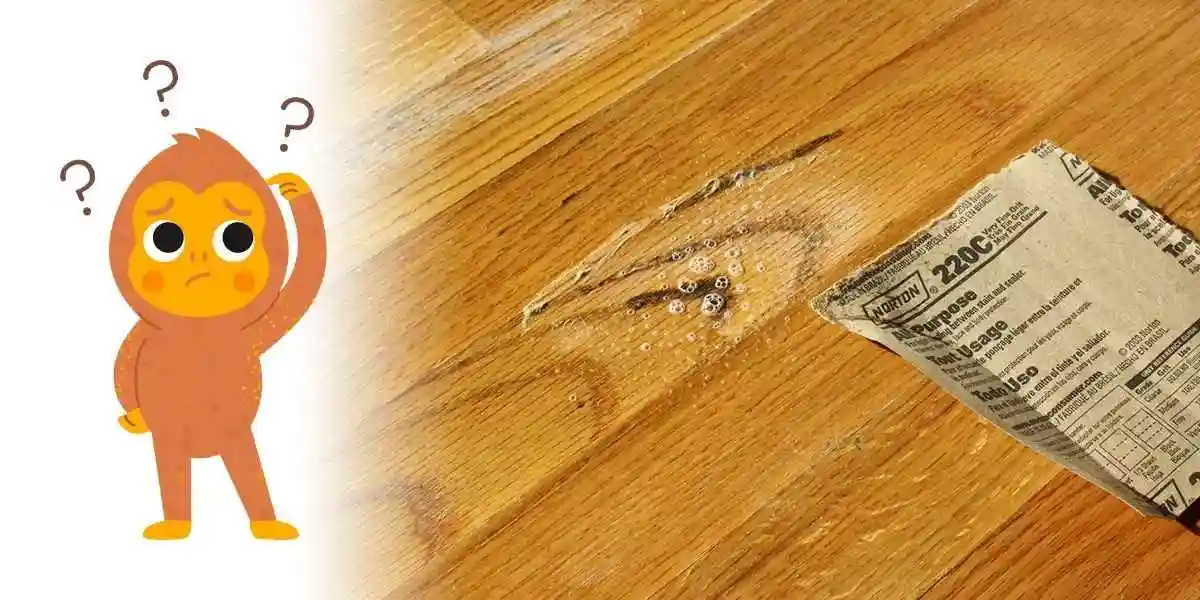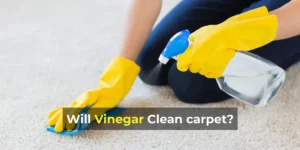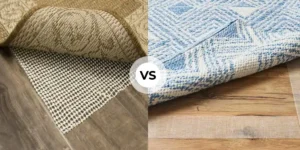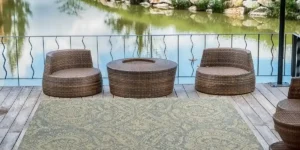A mold infestation is the most challenging thing for a homeowner or landlord.
Even though vinyl flooring is designed to withstand moisture and damage, it can be subject to mold infestations.
If left untreated, mold can cause various health issues and might ruin the entire floor.
Moreover, mold is difficult to spot with the naked eye. But, if you detect it, you should take immediate action to remove it.
Surely, by now, you are wondering: Can mold grow under vinyl plank flooring?
Yes, mold and moisture trapped underneath vinyl floors tend to grow.
Even though it may seem like a small space, mold will find the oxygen, food, and water it needs to thrive.
Even if the water has stopped flowing through (and there is no guarantee of this), the mold spores will still be there.
Read the article for more information on cleaning mold under vinyl plank flooring.
Yet, before doing that, you need to understand how to detect mold under vinyl flooring.
And what causes mold to grow under vinyl plank flooring.
Signs of Mold Under Vinyl Plank Flooring
Using the following tips, you will be able to determine if the vinyl flooring on your home has started to grow mold.
- Watch out for Visible Signs: Look for any stains or dots on your vinyl tiles. If you notice spots on your vinyl tiles, you must clean and mop them thoroughly.
- Beware of an Unpleasant Smell: You can detect mold by sniffing the floor tiles. Mold smells like dirt, damp clothes, or wet wood.
- Plumbing Leaks May Exist: It is possible that the mold is coming from a plumbing issue, and you aren’t aware of it.
- Check your Symptoms: You can also examine a family member’s health to determine if mold exists.
- Identify Mold by Testing: Lastly, you should get the mold tested to determine which type of mold you are dealing with. You can do this either by purchasing a mold kit at the store or by hiring a professional.
What Causes Mold Grow Under Vinyl Plank Flooring?
As we all know, the fungus mold is found outdoors as well as inside buildings.
The fungus starts in the natural environment but eventually makes its way into a home.
It requires moisture, oxygen, and food for growth.
Yet, it also requires darkness and warmth to grow. Vinyl plank flooring can become a food source for mold if exposed to moisture and oxygen.
Also, mold growth will be increased if there is constant moisture in a room.
For instance, your bathroom typically has a lot of moisture because residents tend to shower here.
When vinyl plank flooring is exposed to water more frequently, mold is more likely to grow.
Mold can also grow on vinyl plank flooring when the tiles are not properly installed.
If the tiles are not fit within a space or gaps exist between the tiles, then the opportunity for mold growth increases.
Moreover, standing water in a room can also cause mold to grow over vinyl planks.
The bottom line is that mold can grow under vinyl if the conditions are ripe.
Can mold under flooring be dangerous?
Whether the mold is under your flooring or on top of it. It is harmful to your health because it triggers asthma attacks and may irritate your sinuses.
If you have a weak immune system or chronic lung disease, the mold may worsen your illness.
Since mold can cause health problems, it needs to be removed as quickly as possible.
The Best Way To Clean Mold Under Your Vinyl Floors
Mold found under the vinyl base or between the floors is challenging to remove. As an alternative to hiring a specialist.
I recommend using bleach to clean vinyl floors that have just begun to accumulate mold.
There are indeed other methods of getting rid of mold, but this is what I have found to be the most effective.
Using Diluted Bleach
Bleach is a powerful cleaning agent that kills and inhibits mold growth on your vinyl plank floor.
Supplies Needed:
- A bleach solution
- Water
- Spray Bottle
- Protective gloves and mask
- An ordinary scrub brush
- A dry towel
Applying Procedure:
- Safety Precautions: As a first step, you should protect yourself. Gather all the protective gear listed above and wear it to protect yourself from bleach solution and dirty mold.
- Identify and Address the Source: Then, identify and address the source of moisture that led to mold growth before cleaning. Fixing the source is crucial to preventing future mold growth.
- Ventilate the Area: Ensure proper ventilation by opening windows and doors. This removes fumes from bleach and improves air circulation.
- Prepare a Bleach Solution: Mix a solution of one part bleach to ten parts water. In this case, ten cups of water should be mixed with one cup of bleach. Use a bucket for mixing.
- Test in an Inconspicuous Area: Before applying the bleach solution to the entire area, test it in a small, inconspicuous area to ensure it does not damage or discolor the vinyl.
- Apply the Bleach Solution: Using a sponge or cloth, apply the bleach solution to the mold-affected areas on the vinyl floor. Ensure the affected areas are thoroughly saturated. You should allow bleach to sit on mold-affected areas for about 15 minutes.
- Scrub Gently: Use a soft brush or scrubbing pad to gently scrub the mold. Avoid using abrasive materials that could damage the vinyl. Rinse the area thoroughly with clean water to remove any remaining bleach solution.
- Dry Completely: Use a fan or a dehumidifier to dry the cleaned area completely. Mold thrives in damp environments, so it’s crucial to cut excess moisture.
Tips for Preventing Mold From Coming Back
It’s important to understand that vinyl plank flooring can be impacted by mold.
Here are some tips to help people get rid of mold from their vinyl flooring and prevent it from recurring.
Consider a Moisture Barrier
Install a moisture barrier to prevent mold growth on vinyl plank flooring. You can buy the underlayment at a fairly affordable price.
Some companies provide warranties, making it worth investing in your wood-look floors.
Additionally, it protects pipes, provides better temperature control, and prevents mold and odor.
Keep The Floor Clean And Dry
As dirt gets trapped between vinyl flooring grooves or seams, it will combine with the humid air in your room to cause mold to thrive.
If you don’t clean the dirt, mold will grow and spread quickly under the flooring.
Mold grows where there is moisture. So you should keep your vinyl flooring dry to prevent it from spreading beneath it.
Must See: How to Clean Shaw Vinyl Plank Flooring? (Beginners Guide)
Use a Dehumidifier
To prevent mold from growing on vinyl flooring, you should use a dehumidifier. You can remove excess humidity with a fan.
Still, a dehumidifier can reach places where a fan cannot, like under vinyl flooring.
Ventilate Your Laundry Rooms
Ensure your bathroom, basement, and laundry rooms are well-ventilated to prevent mold growth.
Otherwise, it will trap water vapor on your walls and ceiling if it has no place to escape.
The water will turn into liquid once it has cooled and begin to drip onto your vinyl floor.
Drips can become trapped between vinyl and the subfloor if not noticed soon enough.
Besides, they can be a breeding ground for mold if not noticed right away.
Also See: How to Ventilate Your Laundry Room During Renovations
Try to Keep the Temperature Low
This tip might be hard for some people to do, but it will help keep mold growth under control.
Read More on Vinyl Floors
- How to Clean Shaw Vinyl Plank Flooring? (Beginners Guide)
- Can you Caulk Around Vinyl Flooring? (All You Need to Know!)
- How to Fix Vinyl Flooring Seams? (A Step By Step Approach)
- How to Remove Sticky Residue from Vinyl Flooring? (Full Guide)
- How to Fix Gaps in Vinyl Plank Flooring? (5 Easy Steps)





